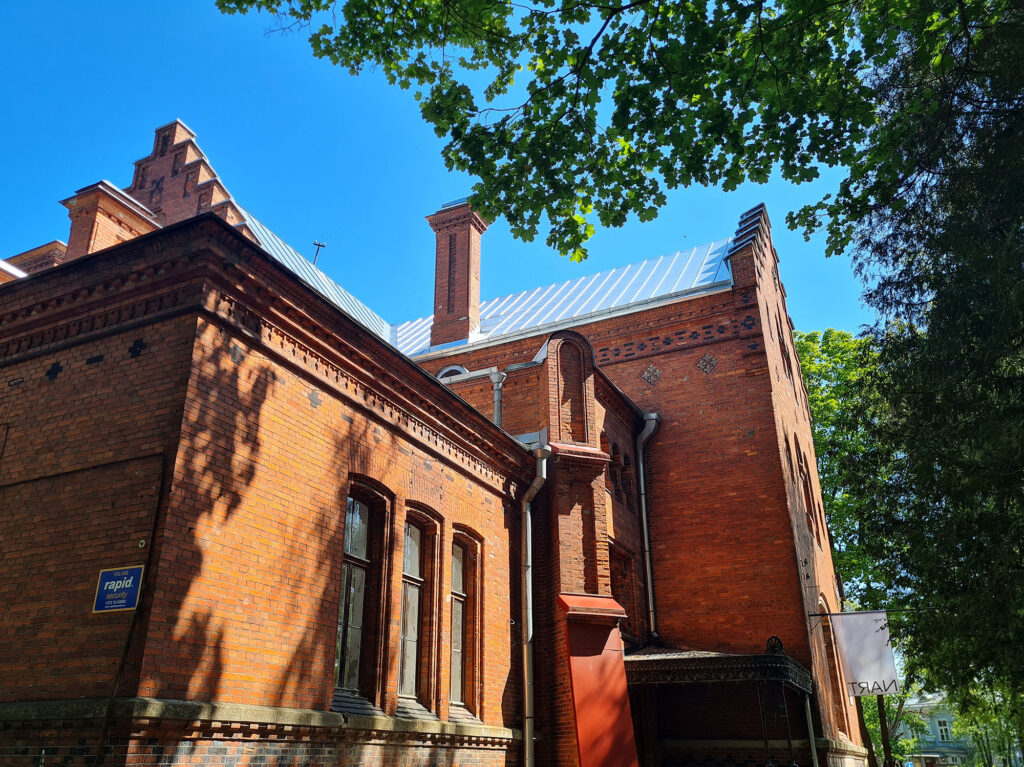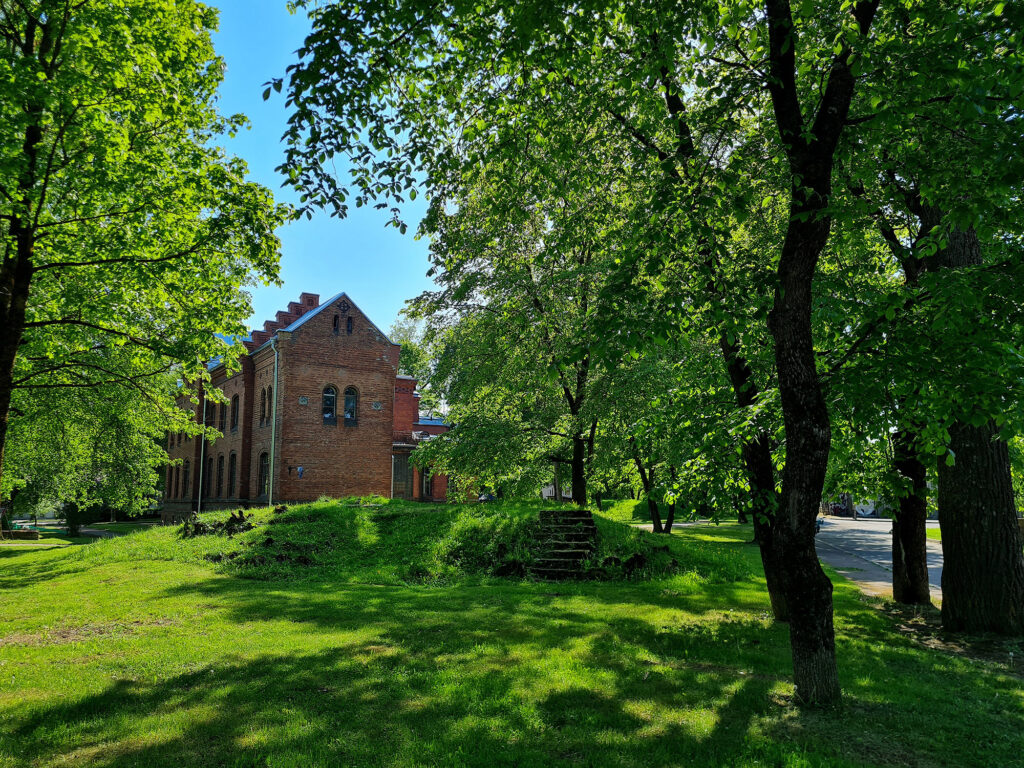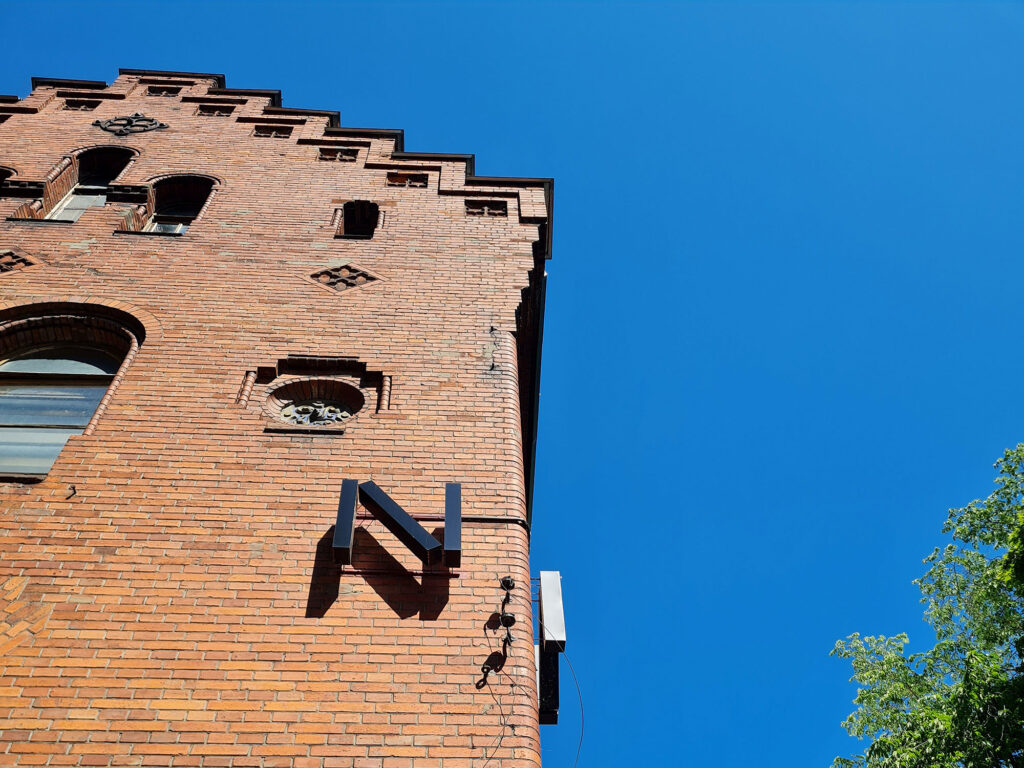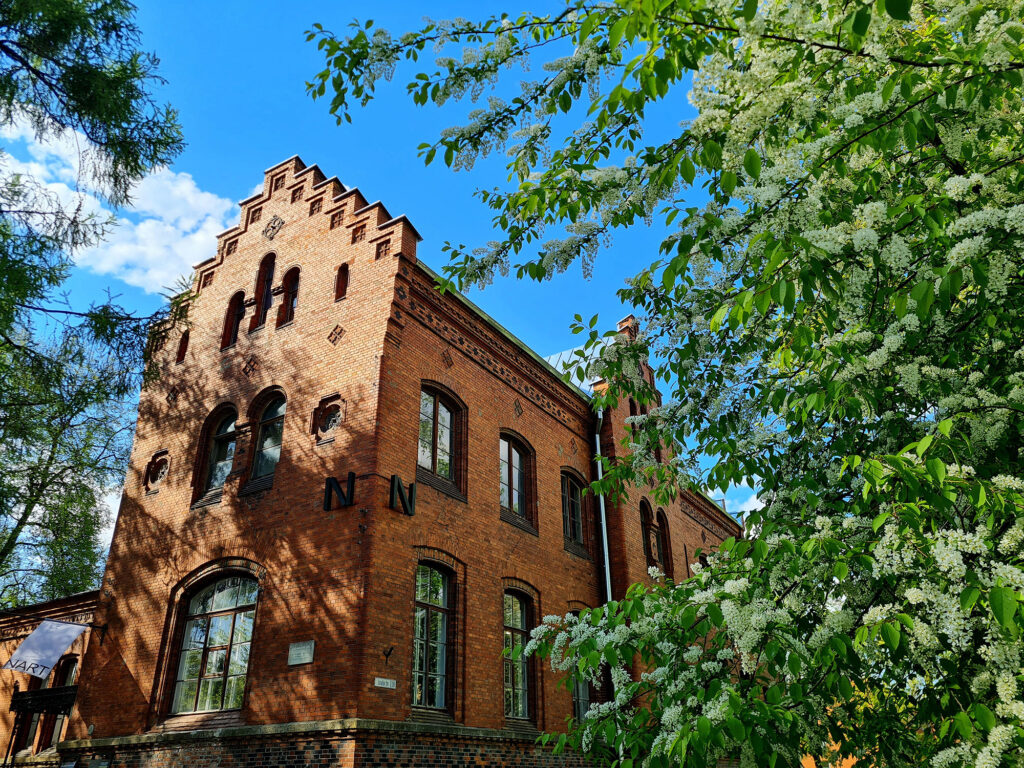The house of the factory director, who was an Englishman, is one of the most gorgeous buildings in Kreenholm. Walking around the house, you will notice traces of imitation of several medieval architectural styles, both Gothic and Renaissance. The whole house with its corbie steps, narrow and tall or round-arched windows, is admirable. See what beautiful window frames, sills and cornices the building has! Don’t miss the beautiful metal details which decorate the building.
The house was built in 1893 and its architect is, of course, Paul Alisch, the architect of the factory.
This house is definitely worth a peek inside. In the entrance hall there is a magnificent staircase with a Gothic design resting on metal bases. Right next to the front door, you can see old central heating radiators. This was likely one of the first houses with central heating in Estonia.
The fact that the director of the manufacture came from England is nothing unusual. John Carr came from the well-known textile region of Lancashire and ran the company for seven years.
During the dramatic years of the revolution and in the 1920s and 1930s, the house was used by the military. In the Soviet period, the building housed a factory leisure club and a library. Now the building is the home for NART, Narva art residency, which is gaining popularity among both locals and city visitors. Every month there are two artists working in the residency. In 2022, there were applicants from 69 countries.
General Aleksander Tõnisson, who is also known in Estonian history as the mayor of Tartu and Tallinn, was the commander of the 1st division from 1919 to 1932. At that time, up to 1,000 military personnel resided in Narva. The general was always very concerned about the image of his division in every city where he lived. On his command, on Ivangorod side (Narva and Ivangorod were one city at that time) – an oak tree park was built to commemorate the War of Independence. Unfortunately, later the park was destroyed.
Aleksander Tõnisson’s son, Leo Tõnisson, recalls an incident from 1932 in connection with the construction of the park:
“Unfortunately, the construction of the park also attracted the attention of the eastern neighbor. The military attaché of the embassy arrived. My father met the delegation in our apartment in Kreenholm. In the entry hall, my father’s coachman, who was wearing a military uniform and had impeccable etiquette, helped the guests to take off their coats. The leader of the arriving delegation shook hands with my father and, without noticing my father’s hand gesture towards Colonel Triig, the head of the divisional staff, who was standing next to him, he extended his right hand to the coachman. My father responded most politely, saying, “Sir Commander, your friendliness indicates a favorable attitude towards our upcoming talks. Please meet Corporal of the Estonian Defense Forces Rudjenko. He is my coachman and a former personal coachman of His Highness the Russian Czar. He will drive you with the tsar’s horses to the Independence Park.”
When Jaan Tõnisson recalled this story later, he said that the guest who seemed to be boiling mad at the beginning of the meeting, turned into a peaceful interlocutor after this incident.









